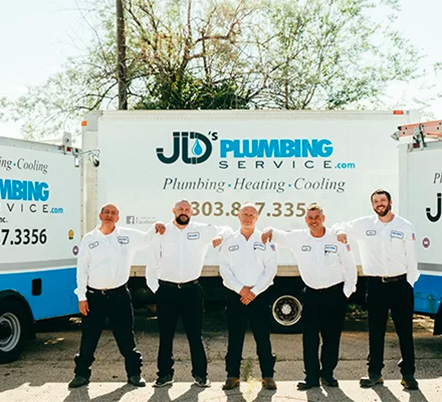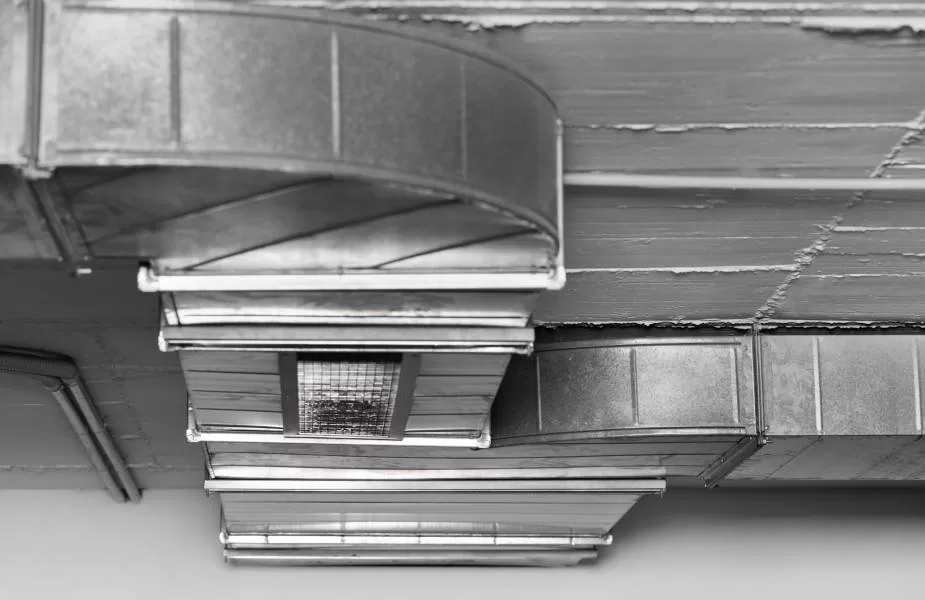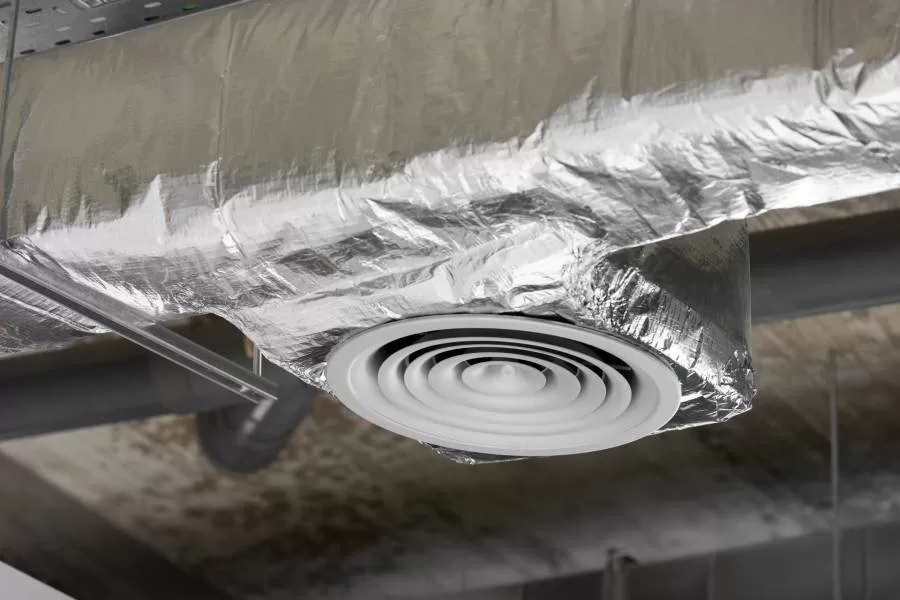Why is my AC Airflow Restricted?
What is Airflow Restriction?
Understanding “why my AC Airflow is Restricted” is essential for maintaining optimal performance of your air conditioning unit.
Airflow restriction occurs when a physical barrier prevents air from flowing freely through the system.
This can lead to reduced air quality, decreased efficiency, and sometimes even damage to the AC.
Common causes of restricted AC airflow include dirty air filters, blocked ducts, or a lack of proper AC maintenance.
Promptly identifying and addressing airflow restriction issues can prevent costly AC repairs and keep your AC running smoothly.

Common Causes of AC Airflow Restriction
- Clogged, dirty air filters
- Blocked or closed vents
- A malfunctioning blower motor can restrict AC airflow.
- Leaks or damage to air ducts can restrict airflow.
If you’re experiencing low airflow from your AC unit, it could be due to a variety of common causes. One possible cause is a dirty or clogged air filter, which restricts the flow of air through your system.
Another common cause is a blocked or dirty outdoor unit, which can prevent efficient heat exchange and reduce overall system effectiveness.
Also, leaky ducts or closed vents can limit the air that reaches certain areas of your home.
Regular maintenance and cleaning can remedy the issues of why your AC Airflow is Restricted and ensure that your Air conditioner is operating at peak efficiency.
Don’t suffer through another sweltering summer – take action to improve your AC airflow and keep your home cool and comfortable.

Dirty Air Filters in Your AC
Don’t let a dirty AC filter ruin your summer! Neglecting to change your filter can lead to increased energy bills, poor air quality, and even AC system malfunctions.
Take a few minutes to check your filter and replace it regularly, especially during peak usage months.
Keeping your filter clean will improve your home’s air circulation and keep your AC running efficiently.
Plus, you’ll save money and enjoy a cooler, more comfortable living space all season.
So, don’t overlook this simple task, and keep your AC unit in top shape with a clean filter!
How Do Dirty Air Filters Restrict AC Airflow?
- Dirty air filters restrict the amount of air that can pass through the AC system.
- Reduced airflow can lead to poor indoor air quality and uncomfortable temperatures.
- The AC system may have to work harder to cool the space, leading to higher energy bills and potential damage to the unit.
- A clogged air filter can eventually cause the AC system to break down.
Don’t let dirty air filters restrict your AC airflow! Neglecting your air filters can lead to poor indoor air quality and decreased system efficiency.
The buildup of dirt, dust, and other particles on the filter hinders the air flow, making it harder for your AC to cool your space effectively.
This can result in higher energy bills, decreased comfort, and even potential damage to your system.
Keep your air filters clean and changed regularly to ensure optimal airflow and performance from your AC system.
Small steps can lead to big improvements in your indoor air quality and AC efficiency.
How Do I Replace my AC Air Filter?
- Turn off the power to your HVAC system.
- Locate air filter, which may be in the air handler unit or in a return air grille.
- Remove the old air filter and dispose of it properly.
- Insert the new air filter, ensuring it faces the correct direction and is securely in place.
You’ve successfully replaced your AC air filter and can now enjoy unrestricted AC Airflow.
Weak and Restricted AC Airflow
Don’t let weak, restricted AC airflow ruin your day – take action now to improve your indoor air quality. Weak airflow is a common issue that can lead to stagnant air, unpleasant odors, and even health problems.
There are simple solutions to improve your home’s air circulation.
Identifying the source of the weak airflow and addressing it head on, you can enjoy a fresh and comfortable indoor environment.
Don’t wait until the problem becomes too serious – take control of your air quality today and experience the benefits of clean, healthy air.
Upgrade your ventilation system, change your air filters, and get professional support to keep your indoor air quality at its best.
Signs of Weak Restricted Airflow From AC Unit
- Warm air blowing from the vents.
- Reduced air flow or weak airflow.
- Unusual noises coming from AC unit.
- Ice buildup on the evaporator coil or refrigerant lines.
- Condenser coil
Look for obstructions in your ductwork or around your unit’s vents. You might need to clear debris or adjust the vents for better airflow.
If these steps don’t work, it might be time to call in a professional HVAC technician to diagnose the problem.
Ways to Improve Weak and Restricted AC Airflow
- Clean or replace air filters regularly to improve restricted air flow.
- Check for any blockages in the vents or ducts.
- Have the evaporator coil cleaned.
- Consider upgrading to a more efficient air conditioning unit or adding a duct booster. Another way to improve poor airflow is by sealing any gaps or leaks around windows, doors, and ductwork.
- Hire a professionals for a deep clean of your AC unit. This can eliminate any dust, dirt, or grime that is clogging your system.
- Consider investing in a smart thermostat to better control and optimize your AC usage. It can even learn your habits and adjust accordingly to save money and energy.

Leaky Ducts
Leaky AC ducts can lead to a range of problems in your home. From increased energy bills to poor air quality, the consequences can be costly and detrimental to your health.
Don’t wait until the damage is done – take action now.
Get a professional to assess the situation and recommend a solution that will improve your indoor air quality and reduce your energy bills.
With leak-free AC ducts, you’ll enjoy a more comfortable home.
Indicators of Leaky Ducts in Your HVAC System
- Unusual noises or vibrations coming from your HVAC system.
- Uneven or inconsistent temperatures throughout your home.
- Higher than usual energy bills.
- Dust and debris buildup around your vents or air filters.
Leaky ducts can be a real problem! The indicators are easy to spot if you know what to look for.
Don’t let leaky ducts impact the efficiency of your HVAC system any longer. Take action today and have a professional inspection done to determine if repairs are needed.
How Do I Find and Repair Leaky Ducts?
Discover the easy steps to find and repair leaky ac ducts for improved air quality and energy efficiency.
- Conduct a visual inspection of your ductwork to identify any visible leaks or damage.
- Use a smoke pencil or infrared camera to detect air leaks in your ducts.
- Seal leaks using mastic sealant, foil tape, or duct sealant.
- Consider hiring a professional HVAC technician to conduct a duct blower test and perform any necessary repairs.
Discovering and fixing leaky ducts may seem daunting, but it’s the key to improving your home’s energy efficiency and saving money on your utility bill.
Frozen Evaporator Coils
Frozen evaporator coils can be a major problem for your air conditioner system. When the AC coils become too cold, they may freeze over and restrict airflow. This can cause poor airflow AC performance and even lead to an expensive repair bill if left unaddressed.
There are a few steps you can take to prevent frozen evaporator coils and keep your AC unit running smoothly:
If your manufacturer’s manual recommends a specific process, take the time to follow it. Not doing so can lead to bigger problems.
Check the filter. Keeping up with regular filter changes is essential for proper airflow and can help prevent frozen evaporator coils.
Inspect vents and ducts. Make sure that all of your vents and ducts are clean, free of debris, and properly sealed.
Schedule annual maintenance. Having a professional inspect your system regularly can help catch potential problems before they become serious issues.
Taking proactive steps to prevent frozen evaporator coils, you’ll be able to keep your AC running smoothly for years to come.
What Causes a Frozen Evaporator Coil in an AC Unit?
- Dirty air filters can cause a frozen evaporator coil by restricting airflow.
- Low refrigerant levels can cause the evaporator coil to freeze up.
- A faulty or clogged condensate drain line can cause water to accumulate and freeze on the dirty coil.
- Issues with the blower fan or motor can cause the air to move too slowly over the coil, leading to freezing.
A frozen evaporator coil can be frustrating to deal with, especially during hot summer months. This problem can be caused by a number of reasons, such as restricted airflow, low refrigerant levels, or a malfunctioning thermostat.
To avoid these issues, it’s important to have regular maintenance and check-ups on your AC unit to ensure that everything is working properly.
How Can I Unfreeze an Evaporator Coil Air Pressure Imbalance?
- Turn off the air conditioning unit to prevent further damage.
- Allow the cold evaporator coil to thaw completely before attempting any repairs.
- Verify that the refrigerant charge is correct and adjust if necessary.
- Check for any airflow restrictions or dirty clogged filters that may be causing pressure imbalance.
Unfreezing an evaporator coil pressure imbalance can be a tricky process, but with the right steps, it’s possible to restore proper pressure to your AC system.
If the issue persists, consider hiring a professional HVAC technician to inspect your system. They can identify any underlying problems, such as leaks or clogs in the ductwork, and make sure that your AC unit is operating correctly.
They can recommend necessary repairs or replacements to prevent the issue from occurring again.
What Causes Pressure Imbalance in an HVAC System?
- Blockages or obstructions in air ducts or AC vents.
- Improperly sized or installed air ducts.
- Malfunctioning or poorly calibrated air pressure sensors.
- Air Duct Leaks or HVAC system.
A pressure imbalance can cause discomfort, inefficiency, and even create hazards in a building.
There are a variety of culprits that can lead to this issue, Without addressing the root cause, the system will continue to operate inefficiently, increasing energy costs and potentially causing damage to the equipment.
Identifying and correcting pressure imbalances is crucial for optimal HVAC system performance.
Solutions for Improving Pressure Imbalance Blower Fan Issues
You don’t have to suffer through the frustration of AC pressure imbalance and blower fan issues any longer. There are simple solutions available that can improve the performance and effectiveness of your AC unit.
Start with basic maintenance:
- Regularly cleaning and replacing dirty filters
- Inspecting ductwork for leaks
These steps can have an impact on airflow and pressure imbalance.
Consider upgrading your blower fan or adding variable speed controls to regulate air flow and pressure. These options can improve the efficiency of your AC and prevent restricted airflow.
What are the Signs of Blower Fan Problems With Your AC Unit?
- Weak or loss of airflow coming from the return vents.
- Unusual noises or rattling sounds coming from the AC unit.
- AC unit is blowing warm air instead of cold air.
- Foul odors emanating from AC unit.
Don’t let blower fan problems ruin your summer! Keep an eye out for these signs of trouble with your AC unit’s blower fan.
These could all be signs of blower fan problems, which need to be addressed as soon as possible to avoid costly repairs down the line.
Don’t put off repairs – call in the experts to diagnose and fix the problem today.
Steps to Fix Blower Fan Malfunctions Thermostat Settings
- Check the thermostat settings to ensure the fan is set to “auto” and not “on.”
- Inspect the fan motor and blades for any damage or debris that may be obstructing airflow.
- Replace high-efficiency filters to improve airflow issues and prevent the fan from overworking.
- If the issue persists, contact a professional HVAC technician to diagnose and repair any electrical or mechanical problems with the fan.
If you’ve noticed that your blower fan is malfunctioning, don’t panic. These simple steps can help fix the problem and get your HVAC system working properly.
Regular maintenance and cleaning of your HVAC system can help prevent blower fan malfunctions and keep your system running smoothly.
How Does the Wrong Thermostat Setting Impact Your AC?
Are you aware of how the wrong thermostat setting can negatively impact your AC’s performance? Let’s break it down for you.
When your thermostat setting is too high, your AC will have to work harder and longer to cool your home, resulting in higher energy bills and potential damage to your AC system.
If your thermostat is set too low, your AC may cycle on and off more frequently than necessary, wasting energy and decreasing the lifespan of your system.
Finding the optimal thermostat setting for your home can not only save you money on energy bills, but also extend the life of your AC system.
Don’t let the wrong thermostat setting negatively impact your AC’s performance – take control and set it right.
Tips on Adjusting the Right Thermostat Settings Ductwork Issues
Adjusting your thermostat settings can be tricky, especially when dealing with ductwork issues. However, there are some simple tips that can help you achieve the perfect temperature in your home.
- Make sure that your ductwork is clean and free from any AC airflow restrictions. This can improve the airflow and efficiency of your HVAC system.
- Adjust the thermostat based on the time of day and your personal preferences. A programmable thermostat can make this process easier by automatically adjusting the temperature throughout the day.
- Consider investing in a smart thermostat that can learn your habits and adjust accordingly, saving you both time and money.
Following these simple tips, you can ensure that your home is always at the perfect temperature.
Potential Reasons Behind Refrigerant Leaks
Refrigerant leaks can be a major issue for any air conditioning system. Identifying the cause of a leak is essential in order to prevent further damage and repair the issue.
- Potential causes of refrigerant leaks include:
- Damage to the unit due to age or impact from an external source, such as an animal or debris .
- Manufacturing defects or improper installation of the unit.
- Poorly maintained condensate lines, causing water to back-up and freeze in the system.
- Pinhole leaks in the air conditioning coils from corrosion due to age or poor maintenance.
No matter what the cause of your refrigerant leak, it’s important to address it promptly as leaks can cause serious damage and reduce your AC’s efficiency. Contact a professional HVAC technician to do an annual AC inspection.
Ways to Detect and Repair Refrigerant Leaks Outdoor Units
Detecting and repairing refrigerant leaks in outdoor units is essential for ensuring your AC system is running efficiently. This is will also ensure your AC airflow is not restricted. But how can you tell if there’s a leak in the first place?
Here are a few ways to detect refrigerant leaks:
1. Check the air filter for clogs and debris that could indicate a leak.
2. Look for ice buildup on the evaporator coil or refrigerant lines, which can be a sign of low refrigerant levels.
3. Listen for hissing or bubbling noises near the outdoor unit, which could indicate a refrigerant leak.
If you suspect a leak, it’s important to have it repaired as soon as possible. An HVAC professional technician can find and fix any leaks, preventing further damage to your system and increasing its lifespan.
Don’t let a refrigerant leak go undetected. Be proactive and pay attention to any warning signs to keep your Air conditioner running smoothly.
Conclusion
When your AC airflow is restricted, it can lead to decreased indoor air quality, higher energy bills, and even potential damage to the unit. It’s important to regularly clean and change your air filters to ensure optimal performance from your AC system.
Additionally, you should keep an eye out for signs of weak airflow, leaky ducts, frozen evaporator coils.




